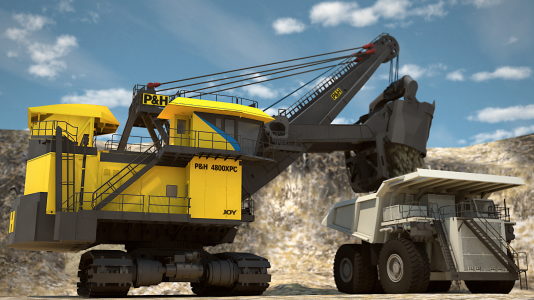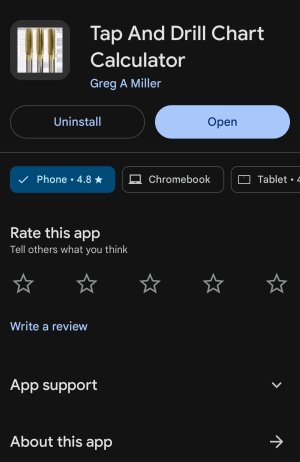-
Scam Alert. Members are reminded to NOT send money to buy anything. Don't buy things remote and have it shipped - go get it yourself, pay in person, and take your equipment with you. Scammers have burned people on this forum. Urgency, secrecy, excuses, selling for friend, newish members, FUD, are RED FLAGS. A video conference call is not adequate assurance. Face to face interactions are required. Please report suspicions to the forum admins. Stay Safe - anyone can get scammed.
-
Several Regions have held meetups already, but others are being planned or are evaluating the interest. The Calgary Area Meetup is set for Saturday July 12th at 10am. The signup thread is here! Arbutus has also explored interest in a Fraser Valley meetup but it seems members either missed his thread or had other plans. Let him know if you are interested in a meetup later in the year by posting here! Slowpoke is trying to pull together an Ottawa area meetup later this summer. No date has been selected yet, so let him know if you are interested here! We are not aware of any other meetups being planned this year. If you are interested in doing something in your area, let everyone know and make it happen! Meetups are a great way to make new machining friends and get hands on help in your area. Don’t be shy, sign up and come, or plan your own meetup!
You are using an out of date browser. It may not display this or other websites correctly.
You should upgrade or use an alternative browser.
You should upgrade or use an alternative browser.
Tool How to drive taps
- Thread starter Greywynd
- Start date
Tool
I think its a matter of perspective, you removing a broken tap or me removing a broken tap is the same job, we just see it differently
I accept that.
You also get lots of practice and practice makes perfect.
Yes, I was going to have a look at the drill presses at work, before answering, but not especially fast. The idea of running it at those speeds does give me the willies, a bit.I'll answer my own question here.
Tapping Feed and Speed | Viking Drill and Tool
Calculations use the desired tool diameter, number of teeth, cutting speed, and cutting feed, which should be chosen based on the specific cutting conditionswww.vikingdrill.com
As usual the commercial numbers come out with much higher speeds than I would dare try.
Yep. If anyone ends up with a tapping head, it’s worth at least having a look at the exploded diagram, if not disassembling and servicing it, just so you’re clear on what’s going on inside.The magic in these units is purpose designed clutch systems in between the motor & the tap. They have calibrated slip settings corresponding to specific tap sizes & indirectly, tune-able for material types. You could have a 25HP motor connected but still tap delicate M1 blind threads all day long because the clutch will slip on that setting &the motor shaft just spins. You still have to pay attention to cutting edge condition, swarf packing, lubrication & all that good stuff but generally those are all torque inducing conditions so hopefully work to reduce tap breakage. But that's another amazing attribute of tapping heads - re-entering a partial threaded hole. No cross threading, no fuss, it just works. They can be spendy but they sure work well.
When I started at my current job, they had two Tapmatic 50x heads, but I was told one ‘didn’t work’. A year or two later, we had a slow day or two, so I took it apart.
Friction clutch systems don’t work very well when someone fills them with oil.
Worked fine since. 🙂
I did break a 3mm tap into aluminum when I was making one of the parts for the AR3 robot arm but that turned out to be my fault not the machine.
Seems if you don't drill a deep enough hole and then try to tap to a depth shorter than the hole something has to give.\
This was generated automatically by the CAM software.
Seems if you don't drill a deep enough hole and then try to tap to a depth shorter than the hole something has to give.\
This was generated automatically by the CAM software.
Code:
%
N1 G17 G20 G40 G90
( BEGIN TOOL LIST )
( TOOL 6 - Tap3mm - DESC: 0.1180 DIA, 2 FLUTE, HSS MAT )
( ENDOF TOOL LIST )
(HoldDown3mm Tap)
N2 T6 M06 G43
N3 S75 M3
N4 G0 Z3.
N5 X-0. Y0.7283
N6 G33.1 X-0. Y0.7283 Z-0.7 K0.0492
N7 G80
N8 G0 Z0.099
N9 X-0.7283 Y0.
N10 G33.1 X-0.7283 Y0. Z-0.7 K0.0492
N11 G80
N12 G0 Z0.099
N13 X0. Y-0.7283
N14 G33.1 X0. Y-0.7283 Z-0.7 K0.0492
N15 G80
N16 G0 Z0.099
N17 X0.7283 Y-0.
N18 G33.1 X0.7283 Y-0. Z-0.7 K0.0492
N19 G80
N20 G0 Z3.
N21 T0 M06 G49
N22 M30
%Ironman
Ultra Member
I’m such a boring person. I look at that and think ‘oh yeah, I keep meaning to read up on forming taps!’
What is that app called exactly John? I'd like to look for. an iOS equivalent.
Good thread gents, interesting. More pictures of things like M36 holes being worked on / threaded would be nice. What equipment has a M36 tapped hole? When do you need to tap 500 holes?
This is large mining equipment, and the M36 tapped holes were threads that were stripped, welded up, and I then recut. These particular bolts hold the swing motors and transmissions that swing the entire upper assembly on top of the undercarriage.
Access is limited, I had just enough room to use two combination wrenches at 90* apart, instead of 180*.
Buying multiple taps to have on hand isn’t really in the cards, often we have to work with what we already have on hand as time is limited. We do well to find a decent hand tap, and sometimes two.
I think you mean the shovels? machines that make 300 ton 60 foot high haul trucks look small. Standing next to one my head is at the middle or just below the axle on one of those tires. If you have any pictures...This is large mining equipment, and the M36 tapped holes were threads that were stripped, welded up, and I then recut. These particular bolts hold the swing motors and transmissions that swing the entire upper assembly on top of the undercarriage.

That’s exactly what we work on, in fact currently we’re rebuilding all if the load roller bores in the track frames on a shovel just like that. Pictures are usually a no-no with our clients, so not something I can share often.I think you mean the shovels? machines that make 300 ton 60 foot high haul trucks look small. Standing next to one my head is at the middle or just below the axle on one of those tires. If you have any pictures...
View attachment 53952
The trick with photos of things like that is having any vague sense of scale.I think you mean the shovels? machines that make 300 ton 60 foot high haul trucks look small. Standing next to one my head is at the middle or just below the axle on one of those tires. If you have any pictures...
View attachment 53952
I remember looking at a listing for a lathe a few years ago, not really knowing what I was looking at, and then realizing there were stairs up to the platform you stand on that rides along with the carriage...
140mower
Don
I remember looking at a listing for a lathe a few years ago, not really knowing what I was looking at, and then realizing there were stairs up to the platform you stand on that rides along with the carriage...
Hoping to put it in your front foyer were ya. 😛
I think I figured that, if I took the roof off my unit and lowered it in with a crane, it’d just barely fit, lengthwise (it was something like 40’).Hoping to put it in your front foyer were ya. 😛
Is it fair to assume that this discussion does not apply to tapered NPT taps
I think it does. I drive those by hand just the same way as I drive regular taps. I'd be even more afraid of using an impact gun on pipe threads.
Annoyingly I see the "tap and die chart" app, which only shows a 75% engagement chart, and not the Calculator app. Thanks Google.Tap & Drill Chart Calculator
By Greg A. Miller
Very bad idea using impact gun on NPT taps. Goes from 0 torque to 100% torque in a fraction of a turn. I’ve made thousands of pipe fittings, only time I’ve ever broken an NPT tap is when attempting to tap using an impact gun.I think it does. I drive those by hand just the same way as I drive regular taps. I'd be even more afraid of using an impact gun on pipe threads.
Moderator edit to add @Frcsc6el8 to your post so he sees it.
Last edited by a moderator:

